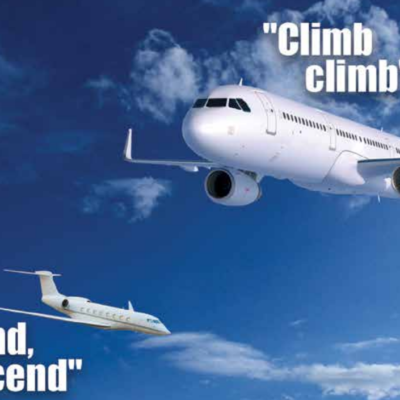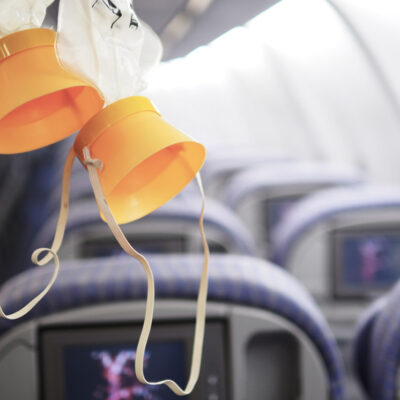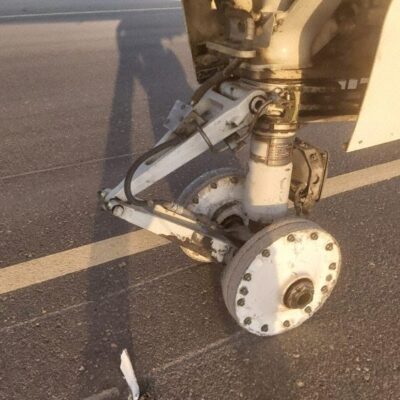راهنمای موفقیت در مصاحبه استخدامی خلبانی

فرصت های شغلی خلبانی در شرکت های هوایی خارجی
تعداد خلبان های بیکار در ایران در چند سال اخیر رو به افزایش بوده است. عوامل مختلفی مانند زمین گیر شدن هواپیماهای فعال به علت فرسودگی و نداشتن قطعه، کاهش تقاضا برای پروازها به دلایل شرایط اقتصادی نامساعد، فشارهای سیاسی و تحریم های بین المللی برای خرید هواپیماهای مدرن باعث شده است یافتن شغل خلبانی در ایران چالش برانگیز باشد. اما شرایط در ایرلاین های بین المللی متتفاوت است به طوریکه اغلب ایرلاینها با کمبود خلبان تجاری دست و پنجه نرم می کنند. به عنوان مثال اخیرا در اخبار داشتیم که شرکت Southwest آمریکا بیش از 8 درصد هواپیماهای خود را به علت نداشتن خلبان نمی تواند استفاده کند. با در نظر گرفتن موارد یاد شده به نظر می رسد مهاجرت و کار برای ایرلاین های خارجی علی رغم چالش های مربوطه به عنوان یکی از گزینه های جذاب پیش روی دانش آموخته های خلبانی باشد.
برای شکار فرصت های کار برای ایرلاین های خارجی، علاوه بر مدارک حرفه ای لازم، باید بتوانید از عهده دو چالش بزرگ بر بیایید اولی داشتن سطح زبان انگلیسی هوانوردی پنج یا شش و دومی موفقیت در مصاحبه های استخدامی خلبانی.
به دلیل محوری بودن شغل خلبانی در حوزه هوایی، مصاحبه استخدامی خلبانی از اهمیت بسیار بالایی برخوردار است. در این مقاله، به بررسی اهمیت مصاحبه استخدامی خلبانی، انواع سوالات موجود در این مصاحبه ها و تکنیک های موفقیت در این مصاحبه ها می پردازم.
اهمیت مصاحبه استخدامی خلبانی:
شغل خلبانی در حوزه هواپیمایی، شغل بسیار شناخته شده ای است که شرایط بسیار خاصی برای اشتغال در آن وجود دارد . ایرلاینها علاوه بر مدارک خلبانی سعی می کنند ماهرترین و حرفه ای ترین خلبانان را از طریق مصاحبه های تخصصی جذب کنند. به دلایل زیر مصاحبه های استخدامی خلبانی باید برای شما مهم باشد:
- از طریق این مصاحبه ها می توانید دانش نظری و عملی خلبانی خودتان را به نمایش بگذارید .
- ویژگیهای اخلاقی و توانایی کار تیمی خودتان را بروز دهید.
- توانایی کار تحت شرایط استرس زا و پرتنش را به مصاحبه گر ثابت کنید و در نهایت
- مطابقت و همسویی خودتان با ارزشهای حاکم در ایرلاین استخدام کننده را نشان دهید.
انواع سوالات در مصاحبه استخدامی خلبانی:
بیشتر سوالاتی که در مصاحبه استخدامی خلبانی پرسیده می شوند، با مهارت های فردی خلبانان و تجربیات گذشته آنها در حوزه هوایی و ایمنی پروازی مرتبط هستند. به صورت کلی سوالات مصاحبه خلبانی به سه دسته تقسیم می شوند:
۱ . سوالات فنی که درباره هواپیما و پرواز و قوانین مربوطه هستند
۲. سوالات رفتاری که درباره شخصیت، قدرت تصمیم گیری و توانایی خلبان برای کار با دیگران هستند
۳. سوالات سناریو-محور که توانایی حل مسئله خلبان و نحوه تعامل وی با مشکلات احتمالی در پرواز را محک می زنند.
نکات مهم برای موفقیت در مصاحبه استخدامی خلبانی:
۱. آمادگی شخصی: قبل از شروع مصاحبه، شما باید خود را به طور کامل آماده کنید. شما باید تجربیات گذشته خود را به خوبی در ذهن خودتان دسته بندی کرده باشید و باید بتوانید به صورت سلیس و روان آنها را بر زبان بیاورید.بدیهی است برای کار در ایرلاینهای خارجی لازم است همه این موارد را به انگلیسی بیان کنید.
۲. آمادگی فنی: برای شکار یک فرصت شغلی خلبانی، شما باید علاوه بر داشتن مدارک از آخرین اطلاعات و تغییرات در حوزه هوایی و همچنین از آخرین اطلاعات و ارزشهای موجود در ایرلاینی که می خواهید در آن مشغول به کار شوید آگاه باشید.
۳. تمرین قبل از مصاحبه
تمرین با سوالات مصاحبه های استخدامی خلبانی می تواند از اضطراب و استرس مصاحبه کم کرده و اعتماد به نفس شما را بالاببرد.در اینجا چند سوال و پاسخ نمونه برای آشنایی شما با مصاحبه های استخدامی خلبانی می آورم:
The altitude at which an aircraft flies can affect its fuel efficiency, speed, and performance. How do you determine the ideal cruising altitude for a particular flight? What factors do you consider, such as weather conditions, air traffic, and aircraft weight?
When determining the ideal cruising altitude for a particular flight, pilots need to take factors such as weather conditions, air traffic, and aircraft weight into account. The ideal cruising altitude varies depending on the mission of the flight, such as distance, duration, and payload.
The biggest factor in determining cruising altitude is the atmospheric pressure and temperature at various altitudes, which affects fuel efficiency and aircraft performance. Pilots aim to fly at an altitude with the least amount of air resistance while maintaining a safe margin from other aircraft and obstacles. They will consider factors such as wind direction and speed, the weight of the aircraft, and the route’s direction to pick the best cruising altitude.
During takeoff and landing, pilots need to know the exact distance required for the plane to come to a stop or accelerate to a certain speed. What is a “stall speed,” and how does it factor into calculating the required runway length? What other variables should a pilot take into account when planning a safe takeoff or landing?
Stall speed refers to the minimum speed at which an aircraft can maintain lift and stay in controlled flight. Below this speed, airflow over the wings becomes too turbulent, causing a loss of lift, and the aircraft will lose altitude rapidly or enter an uncontrolled spin.
Pilots aim to take off or land the aircraft at a speed above the stall speed, known as the minimum control speed (MCS). When planning a safe takeoff or landing, pilots will consider factors such as wind direction, runway length, the weight of the aircraft, and weather conditions to determine the appropriate speed to maintain during takeoff or landing.
Pilots must consider other variables, such as the Weight and Balance (W&B), Runway Slope, and gradient, and environmental factors such as precipitation that can reduce braking action. They use technical calculations such as V-speeds (V1, VR, V2) that help determine the speed ranges required for takeoff and initial climb, the transition from climb to cruise, and required speeds for final approach and landing.
In the event of an emergency, pilots must be able to quickly troubleshoot any issues with the aircraft and come up with a plan for resolving the problem. What are some common emergency procedures that pilots are trained to follow, such as dealing with engine failure, cabin pressure loss, or navigation errors? How do you prioritize your actions and communicate with the ground or other crew members during a high-stress situation?
In an emergency, pilots must remain calm, quickly assess the situation, and take decisive actions to deal with the issue. Common emergency procedures include engine failure, cabin pressure loss, and navigation errors.
Pilots are taught to use the “aviate, navigate, communicate” model when prioritizing their actions. The first priority is to keep the aircraft flying (aviate), then navigate to a safe location or perform emergency procedures if necessary. Finally, communication with crew members and air traffic control can be addressed.
Communication is essential during an emergency situation, and pilots use standard phraseology to relay information in a clear and efficient manner. The pilot in command usually takes responsibility for communicating with the crew and air traffic control to ensure everyone is aware of the situation.
Pilots are trained to practice emergency scenarios frequently to develop their skills and familiarity with emergency procedures. It helps them to be quick on their feet and make better decisions under pressure.
برای خرید بسته آموزشی سوالات و پاسخ های تشریحی مصاحبه خلبانی کلیک کنید:
https://iranaviator.com/product/pilot-interview-questions
درباره دکتر ایوب رضایی
کنترلر ترافیک هوایی مرکز کنترل فضای کشور مدرس و ارزیاب زبان انگلیسی هوانوردی سازمان هواپیمایی کشوری
نوشته های بیشتر از دکتر ایوب رضایی







دیدگاهتان را بنویسید
برای نوشتن دیدگاه باید وارد بشوید.